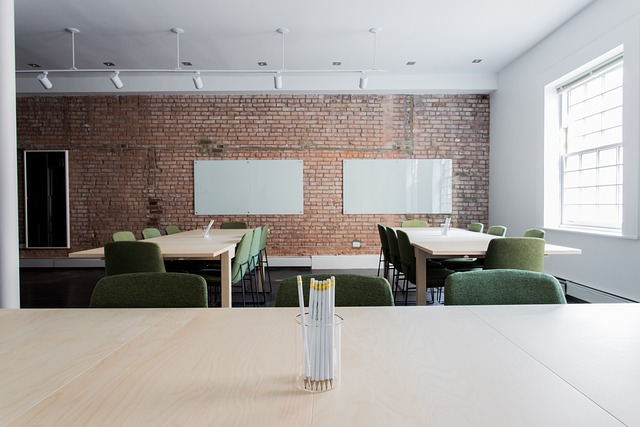With the latest advice from the government, the coronavirus lockdown is beginning to be eased, and some non-essential workers are returning to the workplace.
Things are not yet ‘back to normal’, however, and may not be for some time. It’s therefore likely that employers may have to make changes – some minor, some substantial – in order to fully consider the safety of their employees.
Whatever the size of your business, any return to work may be subject to carrying out a comprehensive health & safety risk assessment. The focus of this assessment is to ensure that you meet your requirements in relation to the Health and Safety at Work Act 1974.
By considering the unique challenges posed by the coronavirus, you may need to implement controls and measures in order to protect employees – and help protect yourself from legal action in the event of an illness.

Latest guidelines
At the time of writing under the government’s latest advice, employees who are able to work from home are advised to continue doing so. Employees who cannot work remotely are being encouraged to return to work if their workplace is open, with the exception of certain industries, including the hospitality and non-essential retail sectors.
The return to physical workplaces will be governed by the new ‘COVID-19 Secure’ guidelines, which outline steps employers can take to reduce the risk of infection. This notably includes the use of barriers and face coverings (e.g. cloth masks) in enclosed spaces, and the creation of workplace shift patterns to minimise numbers.
While it is impossible to guarantee safety, these guidelines are designed to keep workplaces as safe as possible. By adhering to the guidelines, you can mitigate both the risk of infection and the potential for legal action should an infection occur. They can also help protect your organisation against penalties from the HSE, who have stated that inspections will be increased over the coming weeks.
These guidelines are advisory, and do not take into account the specific nature of every workplace. While following them is the minimum a business must do to comply with the law, there is nothing stopping businesses from continuing to furlough employees if they do not feel that it is safe to return to work – or from instigating stronger measures to protect them when they do return.
What is a health and safety risk assessment?
A health & safety risk assessment is a live document outlining the risk factors within your workplace. It is designed to identify aspects of your working environment and behaviour which could lead you to breach health & safety regulations, putting your employees at risk of injury or illness. In relation to the coronavirus, this pertains to ways in which the virus could spread, and the means by which this can be prevented.
A health & safety risk assessment is designed to address the particular circumstances of your business and working environment. While the COVID-19 Secure guidelines are designed to address a range of working environments, a health & safety risk assessment provides more specificity, and provides a plan of action for implementing those rules.
As with all health & safety guidelines, your business will ultimately be judged on whether it could have realistically done anything to prevent any COVID-19 infections that arise. By undertaking a health & safety risk assessment and applying the advice therein, you will have written evidence of the actions you took to keep people safe.
Controlling coronavirus in the workplace
A coronavirus health & safety risk assessment will consider both the way the physical environment may contribute to the spread of the virus, and the behaviour of employees both inside and outside the workplace. Factors to consider in a risk assessment may include:
Travelling to and from work
The extraordinary circumstances imposed by the coronavirus mean that you will have to consider travel in your risk assessment. While the risk of travelling to work by car may be seen as negligible, the use of public transport has been generally discouraged, and is seen as a significant vector for the virus.
If you have employees who are reliant on public transport to travel to work, this may be seen as an unacceptable risk, both for their safety and the integrity of your infection controls. Under these circumstances you may want to reconsider their return to work, or look for ways to accommodate alternative forms of transport, such as bike racks for cyclists.
Cleaning routines
There is an expectation that cleaning regimes will have to be instigated in order to sanitise surfaces, particularly where more than one person is using an item or area. The routine should be outlined and followed regularly, and logged so that it can be relied upon in the event that an infection occurs.
Work surfaces and objects that are touched regularly, such as mice and keyboards, should be cleaned frequently between uses with regular cleaning products. You may also want to limit or ban the use of high-contact devices such as printers or whiteboards, which may be easy vectors for the virus to spread.
General hygiene
Your risk assessment should explore whether individuals are empowered to practice good hygiene, ensuring that your infection control measures aren’t undermined. It should consider whether there is sufficient provision of soap and sanitiser in the workplace, as well as whether your method for drying hands (e.g. towel, air dryer) is hygienic.
You may also want to consider protocols to preserve the hygiene of your work areas. It may be a good idea to ban eating at desks, and for employees to prepare their own lunch rather than getting it from a canteen or supermarket.
PPE and barriers
The use of PPE in environments where it would not otherwise have been used is currently not recommended by the government. The use of social distancing to remain 2 metres apart at all times is seen as sufficient, and the precautionary use of PPE (e.g. face masks) in the workplace may mean that insufficient PPE is left for frontline workers.
An important distinction here is between face masks and face coverings. Face coverings, which may include homemade cloth masks, may have a marginal benefit in preventing the spread of coronavirus. While they are not mandatory, employers should support workers if they choose to wear face masks by following the guidelines on safe and hygienic use.
The use of barriers is also advisable where social distancing is liable to be breached, and in high traffic areas such as reception or breakout areas. Such barriers may also be applied as additional protection within other workplaces, such as between desks, but should not be considered as an alternative to social distancing.
Social distancing
The COVID-19 Secure guidelines stipulate that social distancing must continue in the workplace wherever possible. As each workplace will have considerable differences in layout and routines, this is likely to occupy a large part of your health & safety risk assessment. If it is not possible to remain two metres apart, you may not be able to resume work.
All workstations should be two metres apart, while floor markings such as tape or paint should be used to maintain safe distances around the workplace. Non-essential trips around offices or sites should also be kept to a minimum, with rules imposed on the use of high traffic areas. Where possible, this may include the instigation of ‘one-way flow’ through buildings.
Shift patterns
Part of your approach to social distancing in the workplace may relate to shift patterns. You may wish to consider staggering working hours in order to prevent simultaneous arrivals, or even consider working different days, e.g. working over the weekend and taking weekdays off. This should be undertaken in consultation with employees to assess their needs.
The guidance advises to avoid the use of hot desks where people use any available workstation – and spaces for most offices but acknowledges that this is not always possible. While ‘hot desking’ may seem counterintuitive, it could form part of an approach to shift patterns. By thoroughly cleaning a workstation between uses, multiple people could use a reduced number of workstations in different patterns, maintaining social distancing and maximising your use of space.
Mental health
One underappreciated aspect of health & safety in general is mental health. A coronavirus risk assessment should take into account the mental burden of any changes you are making, as well as the general impact of returning to work during the coronavirus pandemic. It’s likely that some people will be concerned about returning to work, and this may cause added stress.
You should look to provide support to employees where possible, whether this is in person with social distancing or remotely, and to make staff aware of this. It may be prudent to formulate a general policy within your Employee Handbook regarding mental health support with reference to the coronavirus, which can support you going forwards.
How Loch can help
Conducting a successful health & safety risk assessment is vital for any business returning from coronavirus lockdown. Getting it right can help to protect the wellbeing of your employees, while also helping to protect your business from legal action and fines should an infection occur, as well as any damage to your reputation.
Loch Associates have experience in providing a range of health & safety services, including risk assessments, risk management, comprehensive health & safety reviews and mental health first aid training. Visit our Health & Safety page to find out more, or please get in touch with us today.








